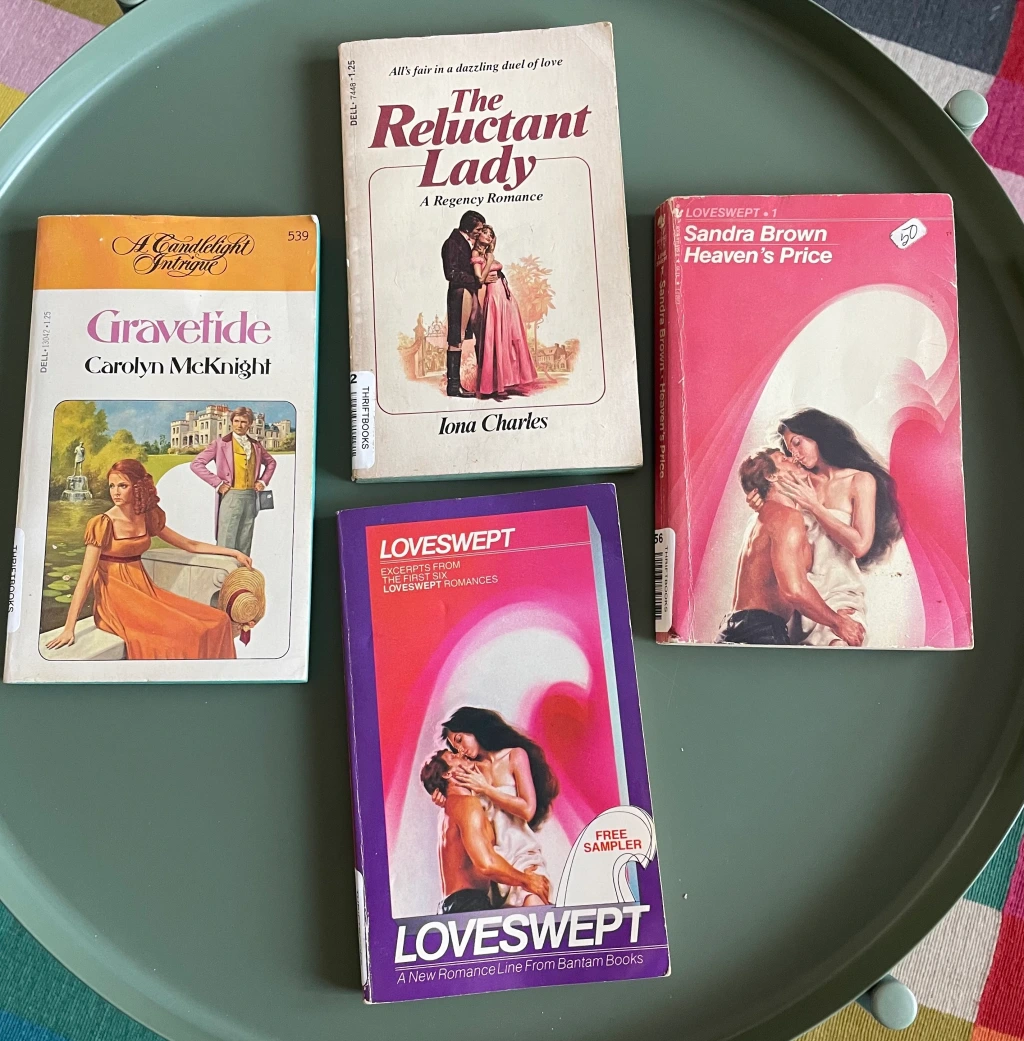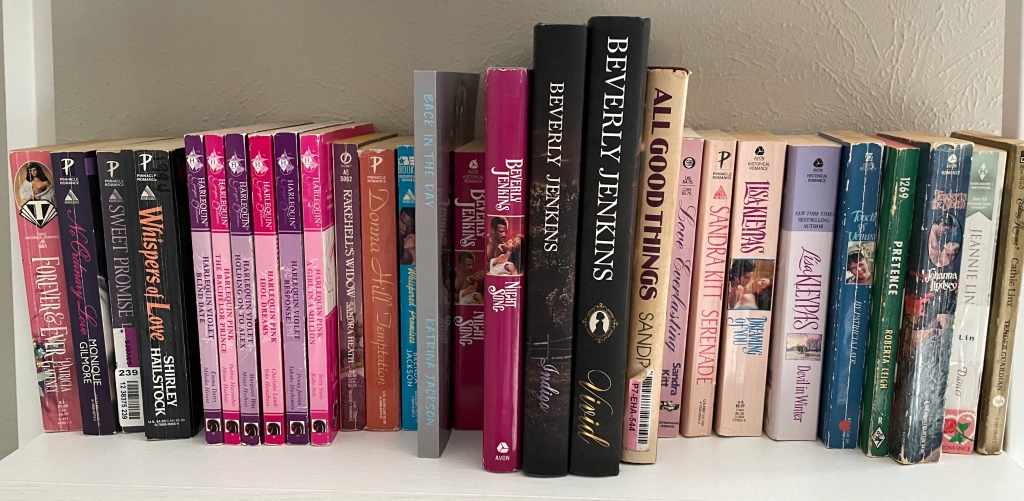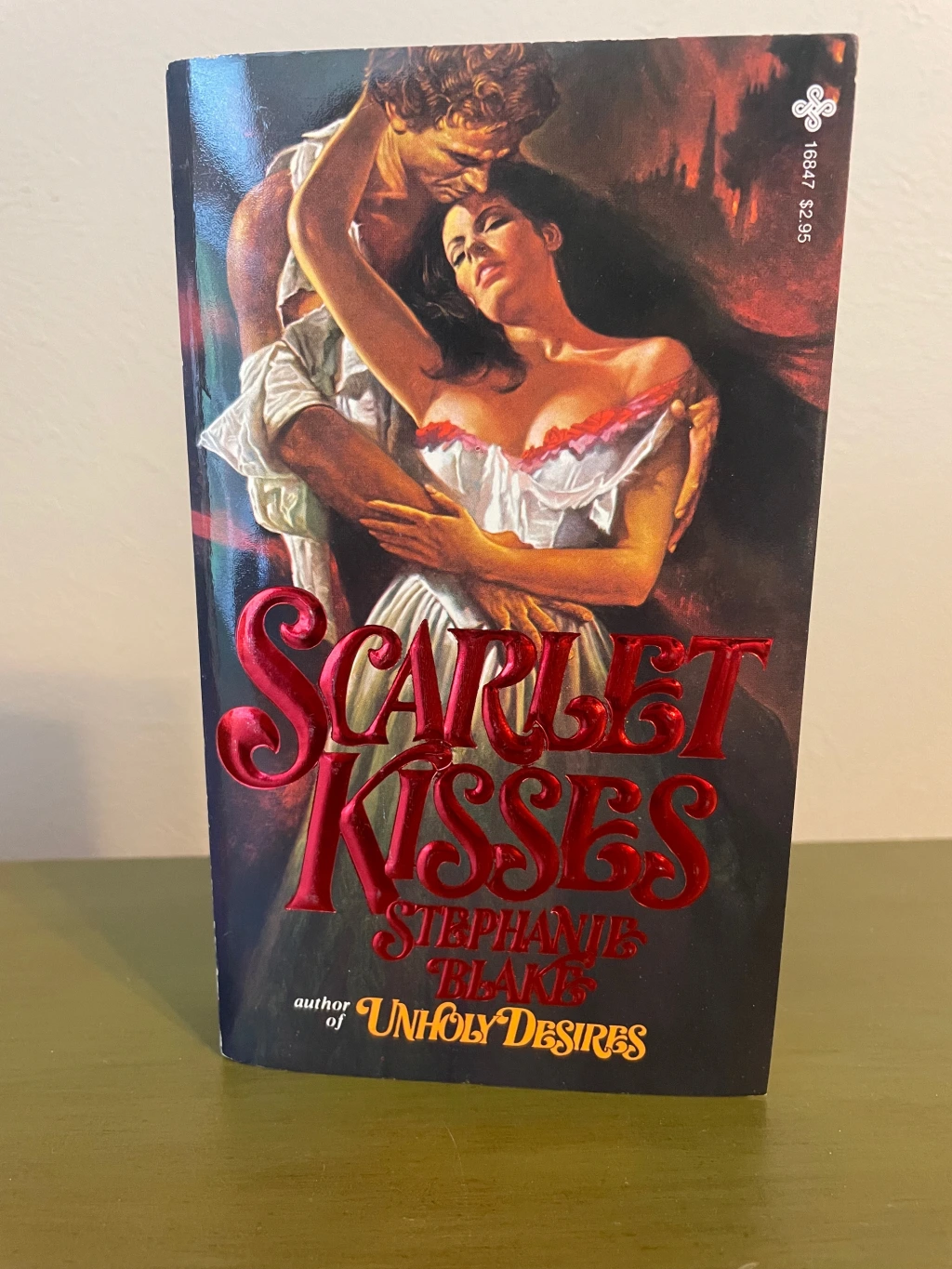As American romance publishing boomed in the early 1980s, editors frequently played an outsized role in shaping the direction of the genre. Avon’s Nancy Coffey famously retrieved Kathleen Woodiwiss’s The Flame and the Flower off of a slush pile in the early 1970s for a weekend read, liked what she read, and changed the historical romance game forever. Vivian Stephens took over Dell’s moribund Candlelight Romance line in 1979 and injected it with relatable characters and locales, upped the heat level, and made it the first line to seriously challenge Harlequin’s dominance of the category romance market. Today I want to add a new name to that list- one that we don’t often mention, but who had just as important an impact.
Around the same time Vivian Stephens was joining Dell, a new face appeared in the offices of Berkley-Jove in New York. Carolyn Nichols came to publishing from journalism, having been one of the earliest writers for WETA television in her hometown of Washington, D.C.. Like Stephens, she felt something was missing from Harlequin’s tried and true romance formula that could be exploited. According to John Markert’s Publishing Romance, Nichols submitted a memo to Berkley-Jove management in 1978 outlining an idea for a contemporary romance line with increased sensuality that could compete with Harlequin Presents. Management didn’t like the idea, but after the arrival of Stephens’ Candlelight Ecstasy line in 1980, Nichols was finally given the green light and went about creating the line that would become Second Chance at Love (Markert, 94).
Carolyn Nichols may have been new to publishing, but she wasn’t new to romance. Born Carolyn Iona McKnight in Lafayette, Louisiana in 1939, she grew up in Washington, D.C., attending Wilson High School and then George Washington University before working at WETA, one of the first public television stations in the country. In the mid 1970s, she partnered with WETA colleague Stanlee Miller Coy for a series of gothic romances- definitely five, possibly six- under the pseudonym Iona Charles. In 1978 and 1979, not long after she had joined Berkley-Jove, Carolyn published two books under the pen name Carolyn McKnight, including Gravetide for Vivian Stephen’s Candlelight Romance! Nichols understood the romance market as both a consumer and author, a viewpoint she’d use to her advantage over the next few years.

More than a copy of Harlequin Presents, the identifying feature of Second Chance at Love- as the name suggests- was that both main characters had experience with love. They may have been married- to each other or someone else- and divorced, or widowed, or otherwise driven apart. This naturally meant that characters were older and typically were no longer virgins, a marked departure from the older formulas, and more in line with the direction Candlelight Ecstasy was taking. The line launched in June of 1981 with Susanna Collins’ Flamenco Nights, and found success in a contemporary romance market that was not yet oversaturated- although it was getting there.
Nichols’ success did not go unnoticed. A year after the premiere of Second Chance at Love, she was hired by Bantam in 1982, ostensibly to save their newly launched line, Circle of Love. A Harlequin Romance clone, Circle of Love turned down the heat at a time when its competitors were turning up the heat, and it was struggling to stay afloat. Luckily for Bantam, Carolyn Nichols had a better idea.
The many lines launched between 1980 and 1982 were starting to create a glut in the romance market. Highly specific tip sheets, like the one Nichols herself created for Second Chance at Love, had created too formulaic of a product. Worse still, publishers with little experience in romance and no interest in hiring talent who did were throwing sub-par books onto the market, hoping readers would snap them up anyways. The quality of a new line had to be something special.
At the same time, a nascent fan culture was emerging in romance. The reader-oriented Romantic Times had launched in 1981, and held its first Booklover’s Convention in 1982. As they had done with historical romance, readers were starting to identify authors they liked and not just the lines they wrote for, and wanted to know more about the people behind their favorite books. Nichols saw all of this and developed a plan that would make her new line stand out in what was now a very crowded field.
With Loveswept, Carolyn Nichols threw away several parts of the old category romance formula. Gone were the tip sheets and guidelines for authors. Also gone were the pseudonyms and relative anonymity of the author. Each book would be under the author’s real name, and the inside of the front and back cover would include a picture of the author and a note from them about their lives. By giving authors the chance to write the stories they really wanted to write, and readers the chance to get to know their favorite authors better, Nichols was betting Loveswept would work.

The other new thing about Loveswept was how it launched- with a free sampler. About the size of a category novel, somewhere around 200,000 of these were printed featuring a chapter from each of the first six books in the series, along with a biography of each author. Importantly, Nichols’ editor note at the front of the book identified each author as well as the pseudonyms they’d already published under as well as their prior publishing houses. The six authors in the book- Sandra Brown, Helen Mittermeyer, Noelle Berry McCue, Fayrene Preston, Carla Neggers, and Dorothy Garlock- had to that point used some combination of sixteen pen names, but here they were standing on their own.

The line was a hit. Nichols’ instincts payed off, and both authors and readers came to love Loveswept over its sixteen year existence before it was shuttered in 1999 (it was resurrected as an ebook-only line in 2011). As she had predicted, authors preferred writing without limits, and readers loved seeing their favorite authors at their best. Nichols continued to innovate- 1986 saw the launch of The Delaneys, one of the earliest attempts at a category romance cross-author series, featuring superstars Kay Hooper, Fayrene Preston and Iris Johansen all writing in the same world. Within each of the books was an ad for Clairol hair dye, including colors that matched that of each of the female main characters.
Nichols would go on to a long career as an editor and publishing executive at Ballantine and New American Library before retiring from NAL as Vice President and Executive Director, Editorial in 2001.
Carolyn Nichols died on October 21, 2017 at her home in Portland, Oregon. Former employee and writer Elizabeth Barrett wrote a lovely remembrance of Nichols after her passing. While we don’t talk about her much now, there can be no doubt that Nichols played a crucial role in the development of American romance. Her innovations as an editor centered readers and authors in ways that shaped the genre to this day and she belongs in any conversation about the most important romance publishing figures of the 20th century.








Leave a comment